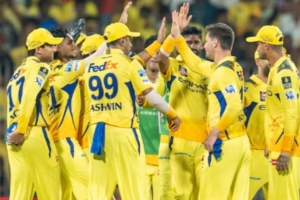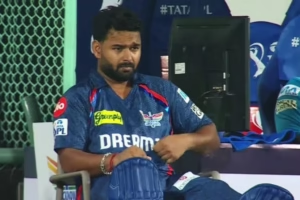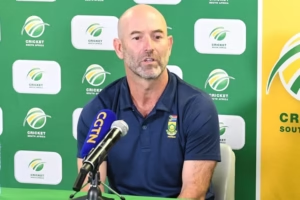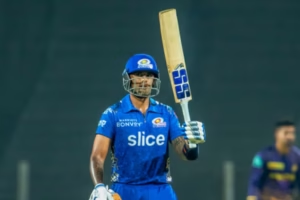The Dhoni Era Defined CSK, But Is It Holding Them Back?


Chennai Super Kings suffered another setback, falling short against Rajasthan Royals in Guwahati on Sunday. Chasing 182, they stuck to their trademark approach—building a slow yet solid foundation before unleashing an onslaught in the death overs. But once again the approach failed, and they faltered at the final hurdle.
The five-time IPL champions haven’t successfully chased a target above 175 since 2021, a glaring concern that continues to grow. Is it a result of their legendary finisher’s diminishing powers? Or did the cracks begin forming much earlier—right at the auction table? Or a bit of both?
The Franchise That Revolves Around One Man
Since the IPL’s inception, Chennai Super Kings have been synonymous with MS Dhoni. With his international accolades and IPL triumphs, he quickly became the heartbeat of the franchise—earning the title of “Thala” from adoring fans. His aura, his leadership, and his finishing touch made CSK a force to be reckoned with.
Even today whenever Dhoni enters the stadium, the sound is deafening and the crowds go frantic behind him. But here lies the dilemma—it’s 2025, and the franchise still hasn’t looked beyond him. Once the most feared batter in the team, has he now become the elephant in the room? Is CSK too fixated on his grandeur to move forward?
A Tale of Contrasting Finishes
Since 2023, Dhoni’s finishing abilities have taken a sharp downturn. In successful chases, he has played just four innings, scoring a mere three runs at a strike rate of 33.31 with an average of 3.00. However, in unsuccessful chases, his numbers are staggering—166 runs in six innings at a blistering strike rate of 197.61 and an average of 83.00.
These statistics paint a stark contrast. While Dhoni still has the firepower to accelerate, his impact often arrives too late to alter the outcome.
The Dilemma at the Death
At 43, a decline in finishing ability is inevitable. Opposition teams exploit this by sneaking in a few overs of spin when Dhoni arrives at the crease, neutralizing his threat. His entry point has also been pushed to extremes—he even batted at No. 9 against Royal Challengers Bangalore.
With Ravindra Jadeja also struggling against spin, CSK are forced to rely solely on their openers and Shivam Dube to counter slow bowlers.
Adding to the woes, head coach Stephen Fleming admitted that Dhoni is carefully managing his workload due to aging knees, making calculated decisions on when to bat.
To make matters worse, CSK has failed to groom a successor. There is no viable replacement for Dhoni as both a wicketkeeper and a finisher. This lack of foresight has left the team vulnerable, exposing the management’s inability to plan beyond their talismanic leader.
The Irony of Leadership
Has the man outgrown the very cause he once served? Dhoni, once ruthless in phasing out aging players to build a future-ready squad, now finds himself in the same position he once sought to prevent. The same leader who moved past the likes of Virender Sehwag, Yuvraj Singh, and Gautam Gambhir in India’s setup is now holding onto a role without a clear successor. In doing so, he has become the exception to his philosophy.
Just like his batting, is he taking his retirement too deep?
Tactical Mistakes in the Batting Order
CSK’s struggles aren’t limited to Dhoni alone. They deviated from their tried-and-tested opening pair of Devon Conway and Ruturaj Gaikwad, opting instead for Rachin Ravindra and Rahul Tripathi, with Gaikwad dropping to No. 3.
Skipper Gaikwad explained at the toss that the management wanted him to “take care” of the middle overs, similar to how Ambati Rayudu and Ajinkya Rahane played their roles in the past. But was this move necessary?
Gaikwad has been among the top three IPL openers since 2021, amassing 2,053 runs in 55 innings. He sits only behind Faf du Plessis and Shubman Gill while outperforming the likes of Virat Kohli, Jos Buttler, and KL Rahul. His shift to No. 3 seems counterproductive, especially when Tripathi, a natural aggressor against spin, could have been the perfect middle-over enforcer.
Need to change the approach?
Chennai Super Kings’ long-standing approach of ‘taking it deep’ has been effective in the past, but it’s becoming a liability due to the lack of established finishers apart from MS Dhoni and Ravindra Jadeja.
With Dhoni’s finishing prowess not as consistent as before and Jadeja being a secondary finisher rather than a primary one, CSK can no longer afford to rely on late surges to chase or set competitive totals.
To counter this, they must shift their approach by attacking the powerplay itself. By maximizing the fielding restrictions, CSK can reduce the pressure on their middle order and ensure they aren’t overly dependent on Dhoni’s late-innings heroics.
Players like Ruturaj Gaikwad and Rachin Ravindra need to take more risks early, and CSK should consider using an aggressive top-order batter or a pinch-hitter to make the most of the powerplay. Adopting this strategy will help them set stronger platforms, allowing their finishers to play with more freedom rather than carrying the burden of rescuing games at the death.
No Home Advantage?
Fleming made a shocking statement that CSK no longer enjoys a home advantage at Chepauk, as they’ve struggled to read the pitch in recent years. With 47 wins in 68 matches, CSK boasts a 69.12% win rate at Chepauk, proving their stronghold at home. This contradicts Stephen Fleming’s statement about losing their home advantage, as their success rate suggests otherwise. CSK would have struggled to afford both Noor Ahmad (₹10 crore) and R Ashwin (₹9.75 crore), their most expensive buys at the auction. Despite investing nearly ₹20 crore in their premier spinners, CSK’s inability to read their pitch only adds to their woes.
Chennai Super Kings’ bowling attack is built around their spinners, making them heavily reliant on slow bowlers to take wickets. With Ravichandran Ashwin, Ravindra Jadeja, and Noor Ahmad leading the spin department, CSK’s success largely depends on their ability to control the middle overs and break partnerships.
Their strategy at Chepauk has traditionally revolved around spin, as seen in their investment in Ashwin and Noor at the auction. However, this dependence means that on flatter tracks or against teams that play spin well, CSK could struggle to find breakthroughs, making them vulnerable in high-scoring games.
Chennai Super Kings’ legacy has been built on calculated strategies and unwavering faith in their core players. However, the game is evolving, and their reliance on past methods is proving costly. The lack of a dependable finishing group, an overburdened top order, and an over-dependence on spin could leave them exposed in high-pressure situations.
If CSK continues to stick to familiar patterns without adapting to modern T20 demands, their success might become a thing of the past. The time to transition is now—before the weight of nostalgia overshadows the need for progress.
Stay updated with all the cricketing action, follow Cricadium on WhatsApp, Facebook, Twitter, Telegram, and Instagram
You might also like
Recommended to you














